Statistics released by the Ministry of Defence have been updated, detailing UK armed forces equipment and formations for the year 2023.
The annual statistics provide insight into the vessels, land equipment, and aircraft used by the armed forces, along with military formations.
According to the latest review of military aircraft figures from 2016 to 2023, there has been a significant decrease in the total number of fixed-wing platforms. The fleet has reduced from 724 aircraft in service in 2016 to 564 in 2023, which represents a reduction of approximately 22%.
A number of fixed-wing platforms have been completely retired or have seen a reduction in numbers during this period. For instance, the BAE 146, Defender, Islander R Mk14, King Air 200, Tornado, and Vigilant have all been phased out, with their numbers reducing to zero by 2023. The Hawk T1/T1A/T1W numbers decreased from 90 to 67, with the remaining aircraft still in service. The Tucano fleet was also entirely phased out, decreasing from 81 to none.
On the other hand, some platforms have seen an increase or stabilisation in their numbers. The A400M’s count increased from 7 to 21, and the Poseidon fleet, which started in 2020, has grown to a total of 9 by 2023. The Lightning fleet increased from 4 to 31, while the Typhoon has maintained a stable presence with a slight decrease from 132 to 137 in total. Voyager also increased from 9 to 14 in total numbers.
Here’s the data.



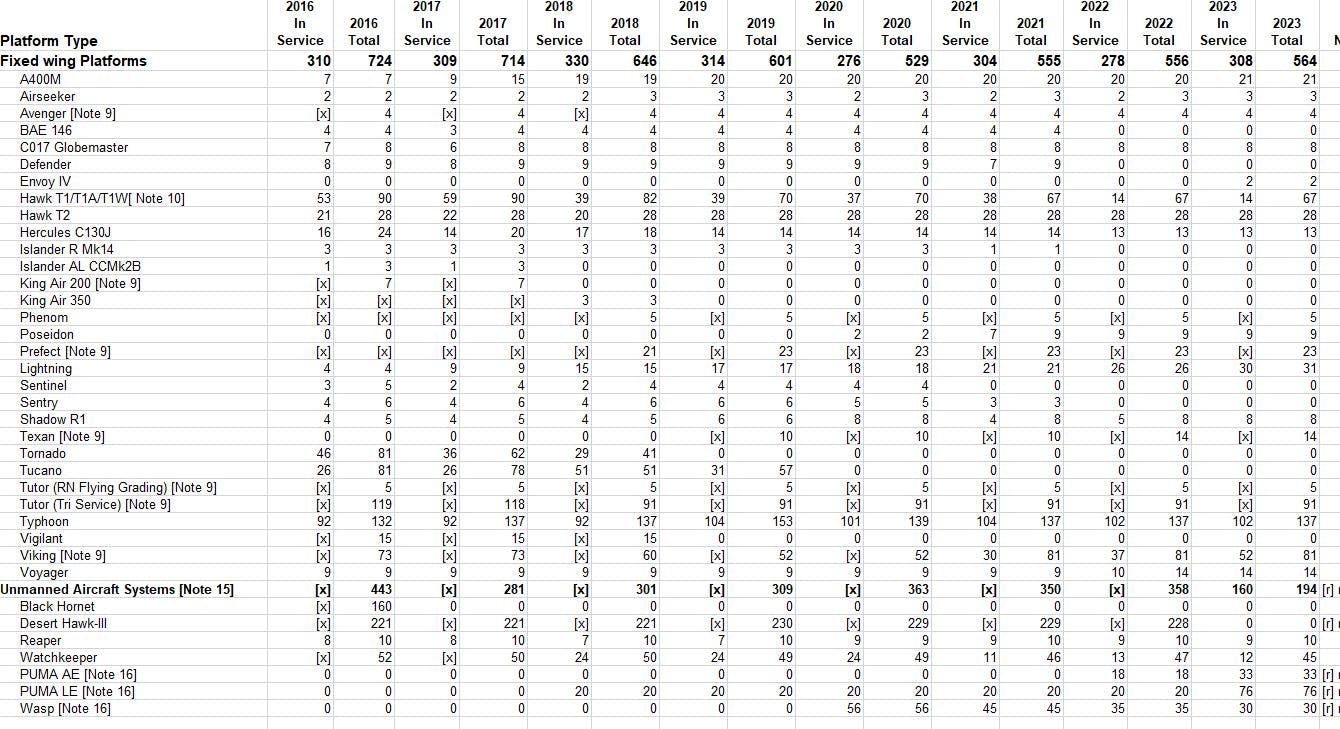
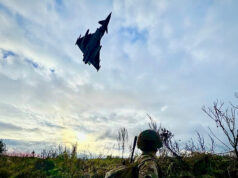
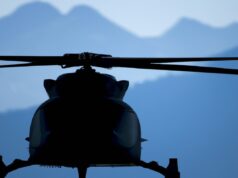
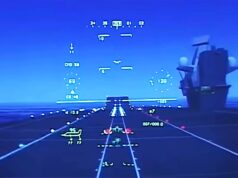
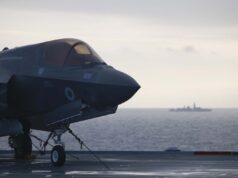

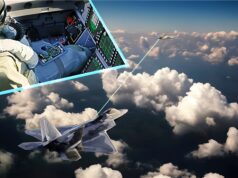
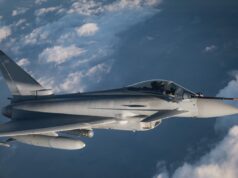
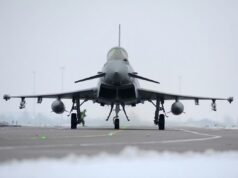
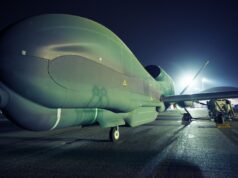


We have all the top bass warning about a potential war with Russia and at the same time we have ongoing cuts.
Rebuilding wont be a short term fix and will take probably a decade or more, but we are 2 years into the Ukraine war and we haven’t even started, if anything we have gone backwards after all the donations without replacement orders being placed.
Typhoon number 137 includes Mk1, therefore. Last article on UKDJ said BAES could be upgraded to higher standard if MoD requested. What US do all the time with legacy platforms then.
The mk1 are being cut with no indication anything else is happening. BAe said they could upgrade them but that involves the government freeing up the cash and placing the order.
The US has their bone yard where they put old kit, that can then be reactivated if one day they are needed way quicker than building new ones.
Exactly, we could even just fly them to the USA and leave them in the desert, they would still be worth having. How much could it possibly cost to park 30 Typhoons in a desert.
I believe they still need regular maintance just not as much, so it will be a non zero cost, which with the budget as it is, isn’t affordable.
They can perform perfectly in the QRA role. As is.
It would make sense to use up the hours on the older air frames. Likewise for initial conversion training. Air display etc. I would have thought they would be capable in the air policing role.
Exactly. Just look at how many early model F16, a much older design, are still in service…….
The US has several advantages that enable them to have an open-air aircraft boneyard. They have a warm dry non-humid, high altitude environment in Arizona with alkaline soil – for their 2,600 acre (11 square kilometer) facility at Davis-Monthan AFB with over 4,400 aircraft. They are a superpower which is required to be able to fight two major wars in different parts of the world simultaneously. They are a superpower with a massive Defence budget that can afford the vast sums it takes to store a lot of old equipment.
We have never stored equipment for future use once it has been declared Obsolete – we do not have the funds or the space, and do not train reservists to operate yesteryears equipment.
Effectively our forces are geared to fight short war and not full out war. Considering the risks to the mainland uk are non existent this is probably a reasonable approach. If however Ukraine war had gone as everyone thought before it kicked off, then it would have been a major mistake.
I think the UK could still be subject to air and missile attack in General War, but not land invasion.
But this is not about us!
NATO is a defensive alliance of over 30 countries – we protect each other. The main event is likely to be a war in eastern or NE Europe. I am not convinced that means it will be a short war – the last General Wars (World Wars) were over 5 years long.
We need to be able to fight a conventional General War that lasts 5 or 6 years and has a high attrition rate of men and machines and very high munitions usage – or a shorter one in CBRN conditions if nuclear weapons are employed.
Missile attacks are what is stopping nato getting involved. Russian missiles landing in london/paris/Berlin would not be popular and of the 3 we have the worst land based missile defence. A Russian sub could easily launch and hit any city in the UK, as no way fighters could be launched and intercept fast enough.
Stopping NATO getting involved in what exactly? Fighting the Russians in Ukraine?? We are not doing that because Ukraine is non-NATO.
My view is the rest of nato would not have got involved even if they were. Nato is a paper treaty that doesn’t force anyone to do anything they don’t want to do.
However there are plenty of wars that have taken place in recent times that nato members have got involved in that had nothing to do with nato.
The west didn’t directly get involved because they were scared of starting ww3. Originally they were worrier about the strength of Russian military and now they are scared about missile attacks on western cities and I guess it going nuclear but I don’t think that is a realistic concern held.
Steve, Why do you think over 30 countries would join NATO, a mutual defence organisation, then not do mutual defence? Only one Article 5 has been called since 1949 – all NATO countries responded with the deployment of military forces.
Several countries who are NATO members have participated in operations outside the NATO framework, including the UK. Examples – Op Banner in NI, Op Corporate in the Falklands, Op Telic in Iraq. So what?
NATO has not got involved in the war in Ukraine because Ukraine is not and was not in Feb 2022, a NATO country. It has nothing to do with being scared of starting WW3. NATO does not just join in any war it feels like – it has rules.
Very easy to answer. They join on the hope the rest will defend them, and nothing to do with what they would do if attacked.
That’s life, everyone is in it for what it brings for them.
You are speculating. How do you account for the fact that all NATO countries responded with the deployment of military forces when Article 5 was last called.
There is no way to know for sure, as it didn’t happen. But knowing how politics works I’m pretty confident of it.
Responding when there was no risk to their own counties, is a completely different scenario than doing it when bombs could have landed on their citizens.
Our government hasn’t got any brains. Air heads all of them. In ww2 statements like we won’t put boots on the ground in Ukraine would have had them hung for reason, giving succour to the enemy
The MOD has confirmed that the 30 tranche 1 Typhoons will be decommissioned in 2025 and used as spares
Yes where as the previous plan was to keep them until 2030. Then Russia invaded Ukraine and suddenly they are deemed completely useless and must be scrapped in 2025.
Strange logic at the MOD.
Tranche 1 has not spares and would have more costly maintenance for an older platform with less capability. Scrapping them for spares is the right decision.
Look at Spain. They modernised 15 of their tranche 1, by swapping obsolete bits for new parts.
Tranche 1 doesn’t share much with tranche 3 you may as well order new aircraft
Agree, 30m to upgrade and to a standard that won’t be as capable as T3 so better to build new.
Wars aren’t won with how much kit you have at the start(yes you need a credible amount) but a countrys abilty to replace lost equipment.
Better to build 15 new Typhoons, our lines go idle soon when the Qatar order in completed. Best thing we can do is keep production hot. Its easier to ramp up production then restart it completly.
In peace time maybe but when there is a non zero chance of a air skirmish on the nato border and bombing ongoing in the red sea it’s madness. Yes expensive but sometimes cost is justified at least until additional f35b arrive which are already massively delayed.
10 tranche one typhoons wouldn’t be the difference maker. Instead it would be the missile carried and tranche 1 can’t carry meteors which is our advantage on Russia in 4.5 gen air combat.
Not convinced on that. They have decent air to air missiles and could be kept back on domestic defence duties freeing up the other jets to undertake forward activities. Plus if no war saves air frame wear as we know the replacement won’t be coming before most of the current airframes are unusable.
I only proposed replacement as being more worth than maintaining an older air frame with less spares. Plus R-77M has an edge on 120Ds that tranche 1 can carry
Agreed, if it was a choice between maintaining old frames or replacing with new, fully agree go new. Instead it’s a choice between maintaining old or cut in capability unfortunately. There is no indication of additional typhoon orders and f35 numbers are being kept vague, I assume because they arent budgeted for and the government doesn’t want to announce even more cuts when it can leave that issue to the next one.
This website keeps track of current deliveries with 35 of the initial 38 has been delivered (including the one lost in accident)
I think you’ll find that ten of them are no longer active already. Sixteen of them will be retired in 2025 and the last four based at Mount pleasant (Falklands) will be retired in 2027. There is around 18 small hangers around Mount Pleasant airfield Can we not store at least a half squadron there in a month ball state just incase?
You sound as if you are not expecting the RAF to replace their old Typhoons with newer ones in the Falklands post-2027? They will.
We don’t keep any old kit in mothballs, as a general rule. Costs too much.
Precisely. Numbers fairly stable as we enter 2024 equates to final paragraph reasonably good news. Then comes 2025.
I seem to recall there was something or other happening over 2024/25 that was causing some concern – escapes me for now, though.
And Spain and everyone else, turning newish aircraft into razor blades is a uniquely British thing to do.
The tranche 1 don’t even need an upgrade to operate as a wartime reserve.
We managed to fit stormshadow on an SU24 in a few months, absolute nonsense that there is nothing that can be done with tranche 1. The MOD has never even asked for a quote from BAE on upgrades.
I think only Spain is upgrading their T1’s at around 30 million a throw. But yes a wartime reserve is very relivent at the moment. You’re right about the storm shadow on the Su 25 but I don’t know if the T1’s have the relivent ground radar needed?
30m Euro, an F35A is 70m USD. They’ll still be maintaining a different Typhoon to the rest of the fleet. Looks like it’s more of an employment exercise than a sound defence decision.
I believe Spain is looking to sell off 17 tranche 2 Thypoons, why on earth don’t we snap them up, fly them to Warton and upgrade them to tranche 3 standard.
It seems bloody obvious to me.
Because Spain wants to sell them to their cousins in Columbia. Whether Columbia can afford them is another matter.
I don’t think its accurate to say that rebuilding hasn’t been started. I would say that in many areas it is well underway. Consider P8, F-35B, Voyager, A400. The issue is that size and numbers are being limited by defence spend. Seems to me the RAF has good equipment foundation which could be built on. It’s current problems seem to be with culture and recruitment. Standardizing helicopter types will save some money going forwards.
The RN are running later, the government having dilly dallied about shipbuilding But there is clearly a plan. It looks like the RN will scrape through to T26 and T31, both of which look like top drawer warships. In the short term the T45 upgrades will create a very impressive AAW ship and Babcock are working miracles to keep T23 the benchmark ASW frigate.
A FSS design is ordered, I think and I see no reason why MRSS should not happen. From what I can glean about labour defence policy they will pull back CSG to the Med and Atlantic and will prioritise the navy if there is any extra money for defence. I think we will see a commitment to increase frigate numbers.
Agree the army is worryingly small and lacking competitive platforms. But the strategy mist is clearing. Several basic building blocks already decided- Ajax, Boxer, CR3, Apache and MLRS. Patrol vehicle types will be rationalised, Warrior will not be replaced. AS90 and light gun replacements are TBA.
Actually the equipment is better than ever, numbers are tiny. We also have a broader range of capabilities than at almost any time with items such as carrier strike making it back and the UK getting ready to soon operate a satellite constellation of SAR and EO satellites for the first time. It’s not all bad. I just think we need to get back to the mindset of holding on to older weapons and building a reserve force.
typhoon T1 and C2 not be upgraded to C3 being the prime example.
Quite. Its instructive to see the extent to which Russia is maintaining its assault in Ukraine by renovating old Soviet era equipment.
Have you also noticed the government importing millions of extra people who we don’t know and have no documents, preparing us for not being allowed to drive anywhere and pushing wages down, they have already decided to give us to Putin, he’ll they are even showing our nuclear deterrent has been allowed to deteriorate to the point that we have twice proven it fails to function.
No idea what your talking about, where are these millions of people? If your talking about illegal immigrants, then it’s well well under millions and frankly under the empire we force populated half the world with Brits and we were directly involved in the insability in most of the middle east and africa during the modern ear, so we have no ground to complain.
Not to mention we have a massive gap in required number of employees by firms, causing a productivity drain, we need additional working age people to rebuild the economy.
Known illegals are 20k a year, we know its been going on for 15 or more years, then there are the ‘asylum seekers’ and the stowaways we never find out about. So I would guess it must be at least a million, and possibly more. But lets be honest you KNEW if you had a brain that this was a point not a statistically counted number because we dont have one because most of it is hidden.
And no, we didnt force populate anything, a number of British moved overseas during the British empire which did last quite a while and cover a lot, but the number of people was very small and spread over the globe.
And no we dont need more people, we need those recruiting to offer sensible wages, in IT wages are lower than they were in 1990 – that isnt exaggeration that is fact. At 60 – well within working age – I am no longer wanted despite 40 years of experience because I am too old, not a single interview in 5 months never mind an offer, even at the pathetic pay being offered. We dont need more people we maybe need reasonable wages and the ability to realise that if I have been engineering in C, C++, ALGOL, COBOL, VB, ADA, VBA, Fortran, RATFOR, Python and many many many others there is the possibility I could program in whatever wacky language they think is todays derigour, but no, its not possible, if I have been programming safety critical it is quite possible I can program your website but no, not possible, if I were a minister I could go from the NHS to Defence with no problem and no experience in either.
Like I’ve said in another post guys 30 Typhoons to be retired because there Trench 1 and can only do interception roll ,but by not not having them this will put more strain on the upgraded Typhoons.Like come on no good because only intercept 🙄 really sure Russia Mig-and flanker pilots would disagree .This government anything save money 😕 🇬🇧
Look at Ukraine, the amount of aircraft that have been destroyed, they cannot be replaced overnight. If anything the UK Gov should be looking at extra platforms or additional aircraft within that platform range. While money is an issue the UK GOV do not help themselves in the procurement process. F35 is a great aircraft but we are not buying enough to actually have a deterrent against aggressors. When you start looking at global threats, the nations who may be a threat will go to war and probably win by attrition and shear numbers. We may have the best platform but at some point it will be outnumbered and outgunned.
There are only 137 Typhoons on paper. A significant number of the Tranche 1s are being reduced to parts already. If there are, after the reductions , 107 Tranch 2/3 Typhoons in forward and sustainment fleet I would be very surprised.
Basically there are no spares for any of the Typhoon fleet.
As I’ve previously mentioned, the Spanish are selling off 17 tranche 2 Thypoons, so just snap them up and upgrade them at Warton.
Bet our government keep there ears closed to that 👂🙄
I’m sure they wouldn’t be interested in ‘pre loved’ Thypoons Andrew, they can’t blow enough money on them, or give a big enough slice of it to their mates in the Defence industry…..
Every procurement has to have a tick in the ‘obscenely expensive’ check box, or it can’t proceed….. Those non executive board places won’t just give themselves away you know😉
And come up with the excuse of as they are coming from the Continent the cost of putting them in quarantine for 6 months outweighs any value gained from the purchase bit farfetched but any excuse is on the cards with this Government
Might be good for UK – Spain relations too.
It would add 17 badly needed airframes to the fleet….
It’s enough to equip a squadron and add to the sustainment fleet and it would go a long way towards cancelling out the loss of the 30 tranche one jets…
Obviously the government wouldn’t consider it, as said, it doesn’t waste anything like the money they want to blow…..
The chart says out of 137 total there is about 100-105 in service. Due to maintainence, upgrades etc.
IF there is a shortage of spares I would presume it’s just an RAF problem as the typhoon is in service with other countries and some countries are buying new aircraft. They wouldn’t get new aircraft if they couldn’t fly the ones in service already from a lack of spares.
So we can work out that with 100 in service about 75-80 will be available to fly on average.
The RAF fly the aircraft daily from numerous locations around the world
I wonder if this is still under consideration given the current situation in Ukraine and the possible threat to us associated with it.
“In a written response to the committee submitted on 23 January, the lead UK contractor in the Eurofighter consortium said that it would be “technically feasible” to bring the RAF’s remaining 30 Tranche 1 jets up to a standard where they could be retained in service rather than retired in 2025, as currently planned.
“It is technically feasible to bring a Tranche 1 aircraft to the standard of a Tranche 2 or Tranche 3 aircraft. BAE Systems has previously provided data to the Ministry of Defence (MoD) that outlines the scope of structural and avionic modifications that would be required,” BAE Systems said, noting that it has not been asked to provide an assessment of the non-recurring design effort, or associated costs, to implement such an upgrade.
The assertion from BAE Systems that the Tranche 1 aircraft could be made viable for longer-term service came about 17 months after Janes reported in September 2021 that the 30 remaining jets are to be retired – an average of nearly 60% of their airframe fatigue lives remaining. Of the 30 Tranche 1 jets that are currently in the inventory, 20 are operational with 10 in storage.”
Courtesy of Janes
https://
janes.com/defence-news/news-detail/upgrade-and-retention-of-tranche-1-eurofighters-technically-feasible-bae-systems-tells-uk-parliament
Why are there no spares? Did all spares in stock get used up, then someone forgot to order some more?
Simple. No money for spares so not enough we’re bought in the first place. It has been compounded since by a general shortage for all Typhoon operators but in the UK case we prioritise Saudi export contracts over UK needs.
You don’t just buy a bucket of spares on ISD and hope it lasts for 20-30 years. There is an intial spares provision (ISR) that should last about 18 months, but spares are demanded continuously as required.
No modern combat aircraft has reached IOC in the planned time frame. Tempest will almost certainly follow that trend so we will have to rely on Typhoon for longer,possibly years longer than currently envisaged. A further order of say 60 over 6/7 years would sustain the production line and provide a modest increase in frontline strength.
One thing is very striking- we have no manned aircraft to deliver combat effects apart from very expensive platforms. We have to use Typhoon or F35 even in low intensity operations. The Ukraine war suggests helicopters may be too vulnerable to modern missiles. Is there a case for a ( comparatively) low cost fixed wing platform to carry out routine air patrols and light strike missions?
US A10 Warthogs?
Love them !
The trainer aircraft (Hawk) should all really have a secondary role for low intensity conflict. In the future if it ever gets of PowerPoint would be Arealis that takes this over. Drones etc have a role but it also good to have the human element too and optionality to scale up training assets to be able to surge.
The redesign of the AERALIS core fuselage seems to be to achieve a better transonic performance. So it could be quite a capable light combat aircraft. Britains most successful aircraft export over the last 40 years has been the Hawk. We need to replace it and so will others, so there will be a market for something more capable than an M 345 but less complex than a T7.
Aeralis’ website also has some CGI (I know, I know) for an unmanned version with longer wings that ‘can’ do aerial refuelling and ISTAR from high altitude. Would be interesting with 12x Brimstone underneath
I’m not a cheap fixed wing platform would be any more survivable than a helicopter. To have decent ECM, decoys etc adds to costs.
I honestly don’t know. But a platform that could
– launch say Brimstones from 20000 ft, beyond the effective range of many MANPADs or
– fly low at high subsonic speeds to avoid early detection
should be less vulnerable than a slow moving, slow maneuvering helicopter.
Why not kill two birds with one stone with a trainer and light attack aircraft?I wonder if the EJ200 engine would fit?
Poland receives new FA-50 light combat jets
6th November 2023
“Under the second contract, worth $2.3 billion, Poland is set to receive 36 FA-50PL Block 20 aircraft, with deliveries expected between 2025 and 2028. Jets in this batch will feature beyond-visual-range air-to-air missiles and other weapon integration. Training and logistics have also been covered in the contract, including full-motion simulators and operational flight trainers.
KAI has originally developed the FA-50 Fighting Eagle light multirole fighter to replace South Korea’s F-5 fighters. It is powered by a single General Electric F404 after-burning turbofan engine. Based on the latest contract awarded by Malaysia in 2023, the FA-50 has an estimated unit cost of $43.5 million”
Courtesy Of Shephard Media
https://
shephardmedia.com/news/air-warfare/poland-receives-new-fa-50-light-combat-jet/
MBDA and KAI to Explore Greater Missile Integration on FA-50, KF-21
“MBDA and Korean Aerospace Industries (KAI) have signed an agreement to explore the integration of MBDA missiles onto KAI combat aircraft.
Munitions such as Brimstone and Spear air-to-ground missiles and Advanced Short Range Air-to-Air Missiles (ASRAAM) will be tested for integration with KAI platforms such as the KF-21 and FA-50.
The armed platforms could also be exported, MBDA stated in a press release.
Meteor Integration on KF-21
MBDA has already been contracted to integrate its Meteor beyond visual range air-to-air missile on the KAI-led KF-21 fighter aircraft, which is expected to be inducted in 2026.
The Meteor is considered one of the best air-to-air missiles in the world, with a range of over 200 kilometers (124 miles) and a no-escape zone of 60 kilometers (37 miles).
Brimstone and Spear have ranges of 20 kilometers (12 miles) and 128 kilometers (80 miles), respectively, while the ASRAAM can strike a target 25 kilometers (15 miles) away.
“The combination of MBDA’s world leading weapon products and technologies with KAI’s proven record of new aircraft development and rapid delivery is an exciting prospect for the world defense market, reflecting the shared values and interests of both parties,” MBDA CEO Eric Beranger said.”
Courtesy of The Defense Post
https://
thedefensepost.com/2023/12/05/mbda-kai-missile-integration/?expand_article=1
Off topic, but I read that the Bell/Leonardo partnership is back on for tiltrotors. Currently a MOU, this perhaps makes tiltrotors a little more likely for our Navy. I still think they will be too expensive for Army/RAF.
Maddening.
Will premature ageing also become a factor in the amount of front-line aircraft we operate?
Congressional Budget Office
Phillip L. Swagel
Director
February 2023
At a Glance
In April 2022, the Congressional Budget Office published Availability and Use of F-35 Fighter Aircraft. That report used data through September 2021, the last month of fiscal year 2021. This update incorporates data for fiscal year 2022 and employs CBO’s recently developed approach for measuring the effects of ageing on aircraft.
Availability and Use in Fiscal Year 2022.
In 2022, F-35Cs’ availability and flying hours per aircraft exceeded those of F-35As and F-35Bs. F-35Cs’ availability increased in 2022; F-35As’ and F-35Bs’ availability decreased. Flying hours per aircraft increased slightly for all three fleets.
Full Mission Availability Rates.
F-35As have had greater full-mission availability rates than F-35Bs and F-35Cs. Full mission availability rates reflect aircraft’s ability to perform all—not just one or more—of their designated missions.
Effects of Aging.
All three F-35 variants have experienced generally declining availability and use with age. However, all three fleets are composed of mostly new aircraft, so estimates of the effects of aging on F-35s are tentative and are subject to change as those aircraft mature.
CBO calculates aircraft availability rates by dividing the number of hours that aircraft are both mission-capable and in the possession of operational squadrons by the total number of aircraft hours for the entire fleet, including aircraft undergoing depot-level maintenance.
(An aircraft is considered mission-capable if it can accomplish at least one of its designated missions.)
Between 2021 and 2022, F-35As’ availability fell by 11 percentage points. F-35Bs’ availability also fell, by 7 percentage points, and F-35Cs’ availability rose by 5 percentage points. In 2022, availability rates ranged from 54 percent for the F-35A and F-35B to 58 percent for the F-35C.
Since 2019, F-35Cs have flown more hours, on average, than F-35As or F-35Bs. For all three variants, flying hours per aircraft increased slightly between 2021 and 2022.
Since 2016, full mission availability rates have been considerably greater for F-35As than for F-35Bs or F-35Cs. It has been common for F-35Bs and F-35Cs to be capable of performing one or more, but not all, of their tasked missions.
Effects of Ageing
In a recent report, CBO analyzed how the availability and use of other DoD aircraft have evolved as those aircraft have aged. Compared with those aircraft, DoD’s F-35 fleet is very new: 87 of the aircraft began operation during fiscal year 2022, and as of September 2022, more than half of the 532 F-35s in DoD’s possession had operated for less than four full years. Only 44 aircraft were in their 10th or later year of operation.
As in its earlier analysis, for each F-35 variant, CBO estimated the relationships between aircraft’s age (measured in months since the aircraft commenced operation) and their availability and use.
The resulting best-fit curves, below, show smoothed portrayals of the observed relationships. CBO used a flexible functional form (including squared and cubed terms) that allowed estimated rates to increase or decrease with the aircraft’s age.
In its earlier analysis, to reduce the potential for unrepresentative results and other problems associated with small sample sizes, CBO generally analyzed aircraft only at ages (in years) at which at least 70 percent of the fleet had been observed.
However, the youth of the F-35 fleet precluded the use of such a stringent standard. Instead, for F-35s, CBO constrained its analysis to ages at which at least 30 percent of the fleet had been observed. Using that relaxed constraint, CBO was able to estimate five-year aging curves for F-35As and six-year aging curves for F-35Bs and F-35Cs
Use has also trended downward as F-35s have aged, with some upturn for F-35Cs toward age 6.
To date, F-35Bs have had availability rates that are roughly comparable to those of Harriers later in their life, but the F-35Bs’ rates appear to be falling more quickly.
So far, the usage rates of F-35Bs have been below those of Harriers later in their life.
Hi Nigel, this triggered the spam filter as it appears to be a bulk of unattributed text copied from elsewhere, it might be wise to include your source.
It still does.
No, just the normal moderation.
Courtesy of the Congressional Budget Office
https://
cbo.gov/publication/58942
Typhoon T1s should be retained or replaced by new.
Hawk, Tucano skew the figures somewhat as the RAF had comparatively large numbers of those from a time when the FT pipe line was much bigger, as was the entire RAF.
So losing those isn’t such a big issue though the pitiful number of replacements are. 9 Texan increases to 14.
Noted Voyager 9 to 14. 9 has been the core in use fleet for ages and the others were in use by commercial companies AFAIWA.
Are they all in core fleet use by the RAF now to be included?
Defender/Islander very much a stealth cut not widely reported at the time.
Hercules an outrage.
Why are they including Black Hornet?
Only 12 Watchkeeper in service equates to 3 Watchkeeper each in 32 RAs 4 Batteries, v poor with rest in storage.
They are desperate if they chose to include Black Hornet, a tiny UAV. I am sure you know that t measures around 16 × 2.5 cm (6 × 1 in) and provides troops on the ground with local situational awareness. It ifits in one hand and weighs 18 g with its battery. I am sure it is an army ‘platform’, not an RAF one’.
Indeed. The main point with it is it’s a roter, not fixed wing. And pathetic as you say !
We waste too much dosh on limited numbers and there is NO weight in the UK’s punch anymore. RAF fighter strength should be the largest this side of the water with the support aircraft it really needs, double up on both P8’s and E7’s to start. Let the FAA have its own squadrons again that will deliver maritime punch, we did in the past. MOD needs some people at the top that actually know what they are doing………. God help us if anything really does kick off for we would be truly sunk…………………. 😩
Quality is fine but you still need it to be available 24/7 365 days per year and that means numbers
Absolutely
Agreed!
Typhoon tranche 1 are still a very capable air to air intercepter just not an air to ground attack aircraft they could still be used around the UK as a fast response aircraft to intercepted Russian or any other suspect aircraft. But this government is intent on getting rid of capable equipment to save on storage cost. Very short sighted.
Yep, they can only do A2A, fine they fly QRA and can also provide escort to A2G capable Typhoons meaning they can carry more mud moving weapons.
That’s too logical.
Yeah I’m sure the only twenty Typoon T1’s still actually active are the QRA squadrons at Lossiemouth & Mount Pleasant? But someone might know otherwise
So true and yet so Crazy 👺
As far as I am concerned anyone from Hunt/Shapps to us plebs on this site mentioning cost is a traitorous act. This is not a time to save
cost. If their is a major chance we could be at war with Russia. For once the MOD need to make sensible decisions. The Tories need to realise some minor tax cuts will not win them an election. That money needs to be spent on defence. Country before party. ” waste” cost today might save you from war tomorrow.
I am no economist but surely there is strong economic benefit to the country in spending more on Defence – money being spent with prime contractors and their myriad suppliers. Jobs saved, more jobs generated, fewer people on the dole receiving benefits? Any new workers then buy stuff and government gets the VAT etc.
I remember several years ago HMG ruling out increasing military orders as an economic stimulant. I agree.
HMG seems to be doing everything to reduce economic stimulus – cancelling infrastructure projects, not repairing the roads, over taxing the people so they have less to spend on goods and services etc.
Not for much longer, hopefully. Hearing Labour want to do the opposite.
If they do, as opposed to yet another mad socialist experiment, I’d support it.
Our government don’t do sensible sadly 🙄
FFBNW 😮
I feel sick….
Most losses were older aircraft etc, the on going Typhoon drama seems a totally money lead disaster but then the top brass in the RAF are more worried about beards and peoples back ground. Very , very poor leadership , weak command and control. Wokie yes men running it.
Airforces mag, March 2024, has an interesting chart. In 1973, both Britain & France, each had 500 combat aircraft. In 2023 France still had 231, while Britain had dropped to 169. For once, I think the French are right & the RAF/FAA should be boosted by around 60 combat jets to be credible.
Agree. 200 should be the minimum Fast Jet force for the RAF/FAA.
Aren’t the RAF about to retire another 30 T1 typhoons . This is very short sighted , whilst they are not as versatile as T2 &T3 they are still a more than capable air defence aircraft , and only halfway through their intended flying hours . With the slow delivery of the f35s these T1’s should be kept in a state of readiness in reserve until the total numbers are back up . We have paid millions to purchase them and it seems a waste to retire them early
How old are these aircraft? Wiki says”, No. XVII (Reserve) Squadron was reformed at Warton as the Typhoon Operational Evaluation Unit (TOEU), receiving its first aircraft on 18 December 2003″.
I wonder what the lifespan of these Tr1 aircraft is? – sounds like they have put in up to 20 years service.
Apparently they are less than halfway through the airframe flying hours . Bae have also stated they could be upgraded . It seems a waste to me of perfectly good and capable aircraft when money is tight and we aren’t exactly flush with numbers
Not sure when this table was compiled but it shows 13 C-130s as in service, these were actually withdrawn from service in Q2 of 2023.
This is way out of date. The RAF no longer have any Hercules C130.
OK fleet has reduce 22% but what capabilty have we lost. And whilst having numbers going into a conflct is important if you can’t replace them when you’re enemy can, its not going to end well. I’m far more alarmed that the UK will cease to assemble fast jets this year than a handful of Typhoons being retired.
I would like to see the T1s replaced by new builds but…there is lots of competition for funds: more P8s, more E7s, SF Chinooks, NMH.
Quoting percentages is useless , 10% of nothing is not but 10% of 1000 is 100. The UK is a third world country but still thinks its powerful ( my arse).
And which countries do you think are powerful? The ones with 600 1970s ex-Soviet jets with no working radar?
Lots of Trolls with the usual “drive by shooting” posts putting the country down I see.
I find it alarming .. that our fixed wing numbers have decreased..
With the uncertainty of our world presently it is alarm bells for armed forces.
Even now the Government wants to scrap Tranche 1 Typhoons when they have a roll to play in national QRA. Estonia 🇪🇪 defence for NATO. We should have a fully armed Typhoon squadron permanently based in Cyprus.
We don’t have enough poseidon aircraft not enough wedgetails ordered.. our F35B orders are so slow ..
As an Ex serviceman.. these alarm bells are so worrying it beggars believe we are so badly defended. This includes our Army and our Navy.
That’s ok, as we know the Russians are afraid of our nuclear deterrent which is more likely to destroy the launching platform than anything we aimed it at, and we all know that a single plane can shoot down a couple of thousand drones and at least 300 enemy planes, the same as our aircraft carriers only need to operate in relays (when of course they can get more than 100 yards from the dockside) and our tanks are so superior that our 50 operational ones can easily defeat Russia’s 2500 plus and their drones and missiles. Sleep sound in bed tonight our government hasn’t really already sold you as rape bags to Putin, honestly
The goal to leave Britain unarmed is being achieved. Russia welcomes it.